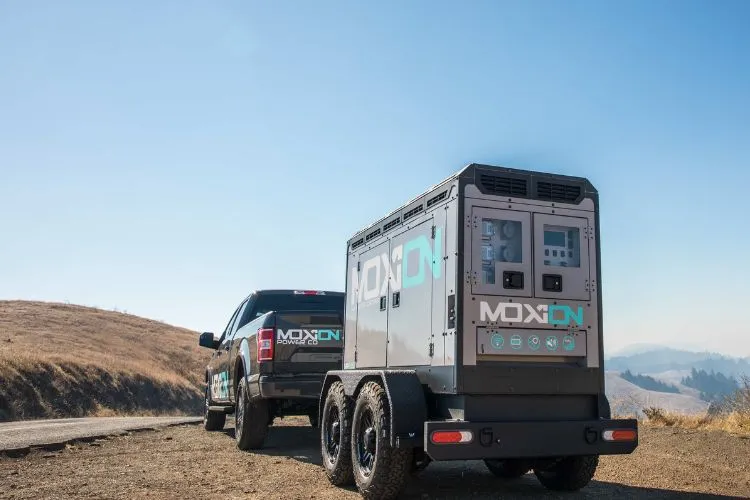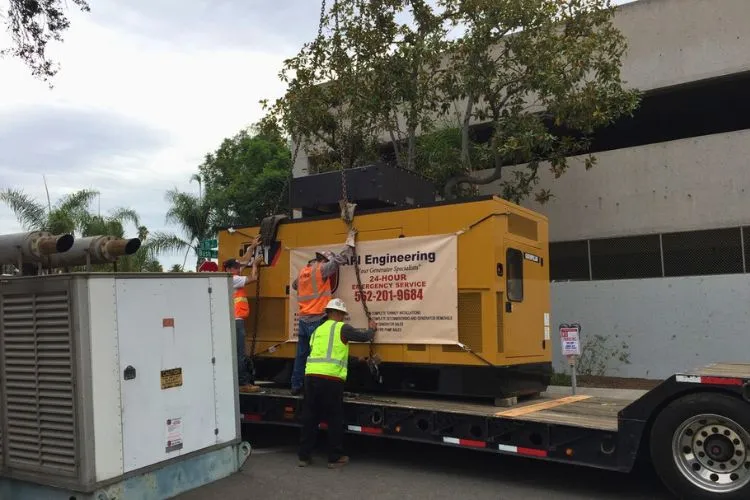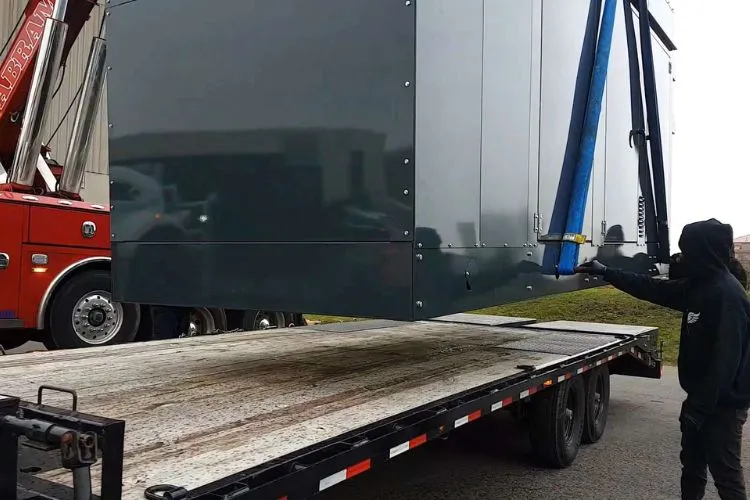It’s not an easy task to transport a generator to a new destination, as it requires careful planning and execution.
Whether you’re moving a portable unit for a weekend camping trip or relocating a standby generator to a new commercial site, understanding the specific needs of your equipment ensures a safe and efficient move.
In this article, we’ll cover everything from legal and safety compliance to post-transport setup, providing a detailed guide for transporting your generator.

Understanding Generators and Their Transport Requirements
Generators come in various sizes and types, including portable, inverter, and standby models. Each has distinct transport needs based on its size, weight, and fuel type.
Portable generators, for example, are designed for easy mobility but still require proper handling to avoid damage.
Size and weight are significant factors, especially for larger industrial generators, which may need specialized equipment for loading and transportation.
Before planning your move, ensure you understand your generator’s requirements.
Pre-Transport Preparation
Legal and Safety Compliance
First, check local and state regulations regarding generator transport.
Some areas have strict rules about moving equipment that contains hazardous materials, such as fuel. Compliance with these regulations is essential to avoid legal issues.
Preparing the Generator
Prepare your unit by draining fuel and oil if required. This step minimizes the risk of leaks during transport. Disconnect batteries and secure moving parts to prevent accidents.
It’s also wise to clean your generator, ensuring you’re not transferring soil or other contaminants to your new location.
Preparing for Loading
For heavy generators, you’ll need suitable lifting equipment like forklifts or cranes. Consider using pallets or crates for additional protection during transport. Proper preparation makes the loading process smoother and safer.
How To Transport A Generator To A New Destination?
Personal Vehicles
If you’re moving a small to medium-sized generator, a personal vehicle might suffice. Securing the generator in a truck bed or trailer is crucial. Proper weight distribution and load securing are essential to ensure safety on the road.
Professional Moving Services
For larger generators or long-distance moves, professional movers are often the best choice. Look for a company with experience transporting similar equipment, and don’t forget to check their licensing and insurance.
Loading and Securing the Generator
Safe loading practices are vital. Use the appropriate equipment and manpower to load your generator without injury or damage.
Once loaded, secure the unit with straps, chains, and covers. Ensure it’s labeled correctly with signs like “Fragile” or “This Side Up” to prevent mishandling.

Transportation and Delivery
Keep an eye on your generator during transport. Regular checks help identify any issues early on. Safe unloading is just as important as loading. Take your time to ensure everything goes smoothly.
Post-Transport Setup
After reaching your destination, inspect the generator for damage. Reconnect batteries, refill fuel and oil, and perform a test run. This step confirms that your generator is ready for use.
Maintenance Tips for After Transport
Even with careful transport, generators may require some maintenance. Check the unit thoroughly and consider storage if you won’t be using it immediately. Proper post-transport care extends the life of your generator.
Pro Tips
Always prioritize safety and planning when moving a generator. The value of insurance should not be overlooked, especially for valuable equipment.
Documenting the condition of your generator before transport can be crucial for insurance claims.
Communication with your transporter ensures you are informed about the status of your generator. Finally, familiarizing yourself with emergency procedures can prevent accidents during transport.
Transporting a generator might seem daunting, but with the right preparation and understanding, it can be done safely and efficiently.
Follow this guide to ensure your generator arrives safely at its new destination, ready for use.
Risk Assessment
Before embarking on the journey of transporting a generator, conducting a thorough risk assessment is crucial to ensure the safety of both the equipment and personnel involved.
This encompasses analyzing environmental hazards such as inclement weather, which could hinder road conditions and affect transport stability.
Similarly, the assessment should take into account potential traffic challenges, roadwork, and tunnel height restrictions, which could necessitate route adjustments.
Identifying and preparing for these risks in advance diminishes the likelihood of accidents, delays, and damage to the generator, leading to a smoother relocation process.

Legal Documentation
Transporting generators often requires specific legal documentation to ensure compliance with local, state, and possibly federal regulations.
This might include transport permits, especially for oversized generators that exceed standard dimensions, and hazardous material handling certificates if the generator contains or has been in contact with fuel or other potentially dangerous substances.
Ensuring you have the correct documentation is vital to prevent legal issues and facilitate a smooth transport process across jurisdictions.
Frequently Asked Questions (FAQs)
How do I choose the right vehicle for transporting my generator?
Consider the size and weight of your generator. Personal vehicles work well for smaller models, while larger units may require professional moving services.
Can I transport a generator with fuel in it?
It’s generally advised to drain fuel and oil before transport to minimize leakage risks. Check local regulations for specific guidelines.
What are the legal considerations I need to be aware of when transporting a generator across state lines?
Regulations can vary, so it’s essential to check both departure and destination state guidelines regarding hazardous materials and equipment transport.
How often should I check the generator during transport?
Regular intervals are wise, depending on the length of your journey. This allows you to address any issues promptly.
Is it necessary to hire a professional mover for a generator, or can I do it myself?
This depends on the generator’s size and your comfort level with its transport. Professional movers offer experience and equipment for larger units.
What are the risks of transporting a generator improperly?
Risks include damage to the generator, legal penalties for non-compliance with regulations, and safety hazards during transport.
Conclusion:
Transporting a generator safely requires attention to detail and careful planning.
From understanding your generator’s requirements to ensuring legal compliance and choosing the right transportation method, each step is crucial for a successful move.
Follow these guidelines to ensure your generator reaches its new destination in top condition.
